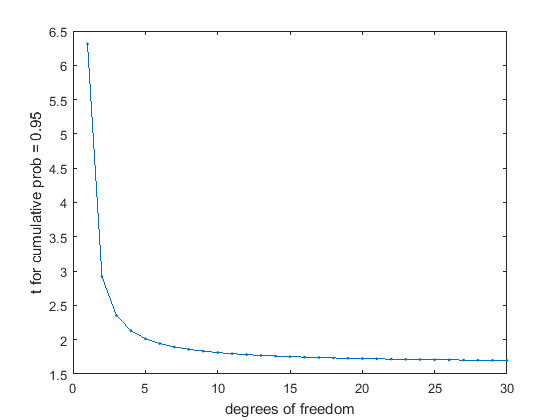What to do if a problem has a non-tabled degrees of freedom?
For example, often when working with t-student tables or other similar tables such as #chi^2# , you only see common degrees of freedom like 1 to 40, 45, 50. But what if the problem has 49 degrees of freedom? Do I use the 50, the 45? Say we can't do it because it doesn't have the amount?
What if the amount of degrees of freedom is something like 222?
For example, often when working with t-student tables or other similar tables such as
What if the amount of degrees of freedom is something like 222?
1 Answer
Choose the closest value in the table.
Explanation:
When the degrees of freedom is very high, the value of the inverse function changes very slowly. This is the case for Student's t-distributions and Chi-Squared where we are normally using the table to look up a value which corresponds to some cumulative probability being met.
These tests are most sensitive when the number of degrees of freedom is low - that's where all the action is. What they are telling us is that if we gather more data (more degrees of freedom) then our answer will get better. But there is a diminishing return as we gather more data, to the point that another point really doesn't change the test by a significant amount. This is reflected in our tables, where at some point they start skipping values and taking larger steps. This can be seen in the following graph, showing a student's t test for an

As the degrees of freedom gets very large the change becomes insignificant, so most tables jump from some high number, like 30, to
So the rule of thumb is to choose the table row closest to the degrees of freedom that you have. The error in doing so will be small, but you can, if you like, interpolate between the values.
If your degrees of freedom is larger than the largest integer entry in the table, use the value for

